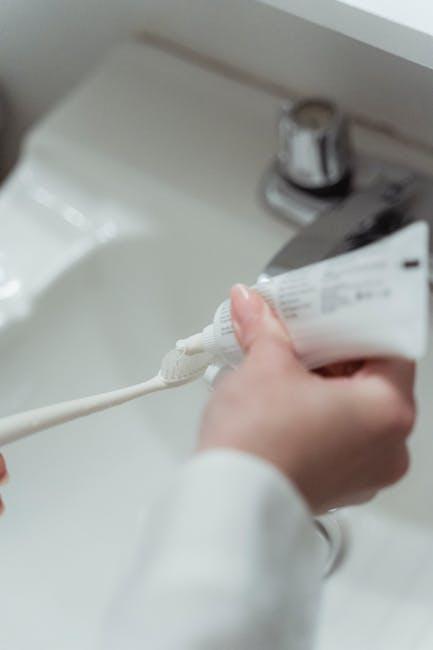Fluoride Ban Could Create Cavities for 1 of Every 3 U.S. Kids – U.S. News & World Report
Recent discussions around banning fluoride in public water supplies have sparked an important debate in the U.S. dental health community. Experts caution that such a ban could lead to a striking rise in dental cavities, affecting up to one in every three children across the nation. With tooth decay already the most common chronic childhood disease, understanding the potential fallout from a fluoride ban is essential for parents, healthcare providers, and policymakers alike.
What Is Fluoride and Why Is It Important?
Fluoride is a naturally occurring mineral widely recognized for its ability to strengthen tooth enamel and prevent tooth decay. Since the mid-20th century, many public water systems have fluoridated their supplies to improve oral health on a community-wide scale — a practice called community water fluoridation. According to the Centers for Disease Control and Prevention (CDC), this simple and cost-effective measure reduces cavities by about 25% in children and adults alike.
Key Benefits of Fluoride for Children’s Dental Health
- Prevents tooth decay: Fluoride helps rebuild weakened enamel and inhibits bacterial acid production.
- Protects against cavities: Consistent exposure reduces cavity risk during critical tooth development years.
- Supports oral hygiene: Works synergistically with brushing and flossing for better oral health.
- Cost-effective: Saves families healthcare costs by reducing expensive dental treatments.
The Proposed Fluoride Ban and Its Projected Impact
The proposed fluoride ban aims to remove fluoride from tap water, citing concerns about overexposure. However, many dental health organizations and experts warn that eliminating this protective mineral from community water supplies could unintentionally cause a surge in tooth decay among children.
According to a recent U.S. News & World Report article referencing dental health research:
- 1 in 3 U.S. children could develop new cavities following fluoride removal.
- Low-income families due to limited access to dental care alternatives.
- Increased dental treatment costs would strain families and the healthcare system.
Impact Breakdown
| Group | Estimated Cavity Risk Increase | Additional Annual Dental Costs |
|---|---|---|
| Children (Overall) | 33% | $200 million+ |
| Low-income Families | 45% | $120 million+ |
| Rural Communities | 40% | $60 million+ |
Benefits of Fluoride: Backed by Scientific Evidence
Multiple scientific studies support the benefits of fluoride in reducing tooth decay. Here are a few highlights that underscore fluoride’s role in oral health:
- CDC recognition: Named one of the 10 great public health achievements of the 20th century.
- American Dental Association (ADA) endorsement: Fluoride is key to preventing cavities and promoting early dental health.
- Reduction in tooth loss: Communities with fluoridated water show significant declines in early tooth loss rates among children.
Common Misconceptions About Fluoride
Despite its demonstrated benefits, fluoride faces opposition based on misunderstandings, such as concerns about:
- Fluorosis: Mild dental fluorosis (tiny white spots) can occur from excess fluoride but usually poses no health threat.
- Toxicity fears: Fluoride levels in water are strictly regulated to safe amounts for health.
- “Natural” vs. added fluoride: Fluoride occurs naturally, and water fluoridation simply adjusts levels to optimal concentrations.
Practical Tips for Maintaining Children’s Oral Health Without Fluoride
If fluoride is banned or reduced, families can take proactive steps to minimize cavity risks:
- Consistent Oral Hygiene: Brush at least twice daily with fluoride toothpaste (and consult pediatricians if fluoride toothpaste isn’t an option).
- Limit Sugary Foods and Drinks: Reduce consumption of sugary snacks and sodas that feed cavity-causing bacteria.
- Regular Dental Checkups: Early detection and sealants can protect teeth from decay.
- Use Fluoride Alternatives: Fluoride varnishes or supplements might be recommended by dental professionals.
- Encourage Drinking Water: Swap out sugary beverages for plain water to improve oral health and hydration.
Case Study: The Effect of Fluoride Removal in Communities
One notable example comes from the city of Calgary, Canada, where the water fluoridation program was halted in 2011. Subsequent studies revealed a significant rise in dental decay rates among children, particularly in lower socioeconomic neighborhoods. These findings reinforce concerns around the potential consequences of fluoride bans in the U.S. context.
Summary of Calgary Case Study Data
| Parameter | Fluoridation Period | Post-Fluoride Ban |
|---|---|---|
| Child Cavity Rate | 20% (baseline) | 35% (increase) |
| Dental Costs for Families | Lower | Higher by 30% |
Firsthand Experience: A Parent’s Perspective
Jessica, a mother of two from Ohio, shares her worries:
“After hearing about the proposed fluoride ban, I’m concerned about my kids’ teeth. My youngest already needed fillings last year, and without fluoride in our water, I fear their dental problems will only get worse. We’re trying to be diligent with brushing and diet, but it’s stressful to think about extra dental visits and expenses.”
Conclusion: Why Fluoride Matters for U.S. Kids’ Dental Health
The potential fluoride ban could have far-reaching consequences, putting millions of U.S. children at higher risk for painful and costly cavities. Scientific research and real-world cases show fluoride’s powerful role in maintaining healthy teeth, especially during early childhood. While concerns around fluoride safety deserve respectful consideration, the dental and public health communities emphasize balanced, evidence-based approaches rather than outright bans.
Parents and caregivers can play a critical role by maintaining good oral hygiene routines, seeking professional dental advice, and staying informed about changes in local water policies. Protecting children’s smiles today ensures they grow up with healthier teeth — and fewer cavities — tomorrow.


